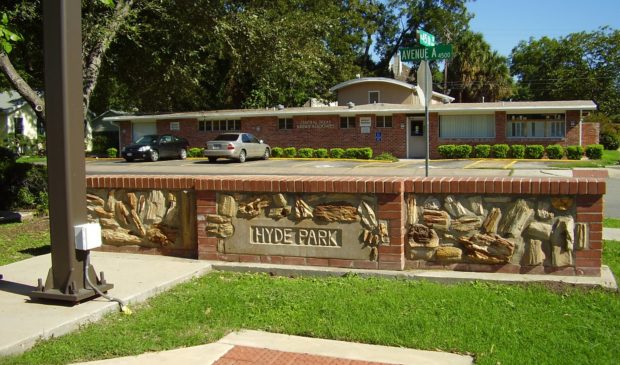Council debates preservation of special zoning districts
Wednesday, April 24, 2019 by
Ryan Thornton City Council members have come to a loose consensus on the five questions in City Manager Spencer Cronk’s land development code memo. Council is fundamentally in agreement that a new code is necessary and that a zoning map should be drafted along with the zoning text for the eventual approval of both components at the same time.
Preparing for a possible vote on a joint response to the questions Thursday, Council sat down Tuesday morning to consider providing context to the answers and additional direction to city staffers as they prepare to act on those responses. Cronk’s first question, however – regarding the scope of the code revision – proved to be a Pandora’s box opening up specific ongoing land use controversies, like what to do with special zoning districts that have been explicitly created to address a real or perceived unique land use context.
In general, conditional overlays are simple enough to be incorporated into the base zoning document of a new land use code, but the complexity of more particular zoning overlays like Neighborhood Conservation Combining Districts could make them difficult to match with new, simplified regulations.
Instead of preserving these special zoning districts in the new code in their current form (made possible by Title 25 of the city’s current code), Mayor Steve Adler proposed adapting them by carrying them over and then adding conditional overlays to make sure they are able to accommodate any universally applied changes made in the new code, such as loosening restrictions on accessory dwelling units or adding housing capacity in transition zones between major corridors and low-density neighborhood streets.
Adler said this way an NCCD would remain largely unchanged, only modified “to the degree that it didn’t allow for the ‘missing middle’ housing in a transition” or “to the degree that it stopped the realization of density or housing on commercial corridors.”
Adding housing capacity with overlays, Council Member Ann Kitchen said, is “essentially changing the NCCD,” which, according to a number of other Council members, is exactly what should happen if the city wants to create new housing in the urban core, where each of the city’s six NCCDs (all of them created more than a decade ago) are located.
“We should really take the lessons of what those did or did not accomplish and ensure that we’re not using NCCDs as a tool to opt out of the code rewrite, because the challenge that we face is big and we shouldn’t be allowing areas to opt out of being a part of the solution,” Council Member Jimmy Flannigan said.
According to Council Member Kathie Tovo, whose District 9 is home to three NCCDs, some of those districts are already part of the housing solution. Tovo called for an analysis of the impact of NCCDs in relation to city policy goals before rushing to conclusions about them. Hyde Park, she said, in particular, already offers a variety of missing middle and multifamily housing from ADUs and duplexes to fourplexes and more traditional apartment buildings.
“I think we need to have a realistic conversation about which neighborhoods have the so-called missing middle on the ground and what has helped achieve that; in the case of Hyde Park, the NCCD has helped achieve that,” Tovo said.
One of Tovo’s concerns is that upzoning neighborhoods like Hyde Park and removing the protections of the NCCDs runs the risk of losing that affordable missing middle housing where it already exists so that more expensive housing can replace it.
Not everyone was convinced by Tovo’s defense of the special zoning districts. Council Member Greg Casar said the city would have to aggressively pursue both affordable and market-rate missing middle housing in order to meet its housing goals of adding 135,000 units within a decade.
Particularly, in contrast to Draft 3 of CodeNEXT – which zoned for far more units outside of the urban core than within it – Casar said the new code should focus on adding housing in the city’s central neighborhoods.
Mayor Pro Tem Delia Garza and Council members Natasha Harper-Madison and Pio Renteria noted an interest in getting more information about the different NCCDs at Thursday’s meeting, which Brent Lloyd, development officer with the Development Services Department, agreed to have prepared for the meeting.
“It sounds like if they’re providing more (housing) than other neighborhoods are, then they wouldn’t be affected by this kind of additional overlay of the transition zones,” Garza added.
Photo by WhisperToMe [Public domain], via Wikimedia Commons.
The Austin Monitor’s work is made possible by donations from the community. Though our reporting covers donors from time to time, we are careful to keep business and editorial efforts separate while maintaining transparency. A complete list of donors is available here, and our code of ethics is explained here.
You're a community leader
And we’re honored you look to us for serious, in-depth news. You know a strong community needs local and dedicated watchdog reporting. We’re here for you and that won’t change. Now will you take the powerful next step and support our nonprofit news organization?











